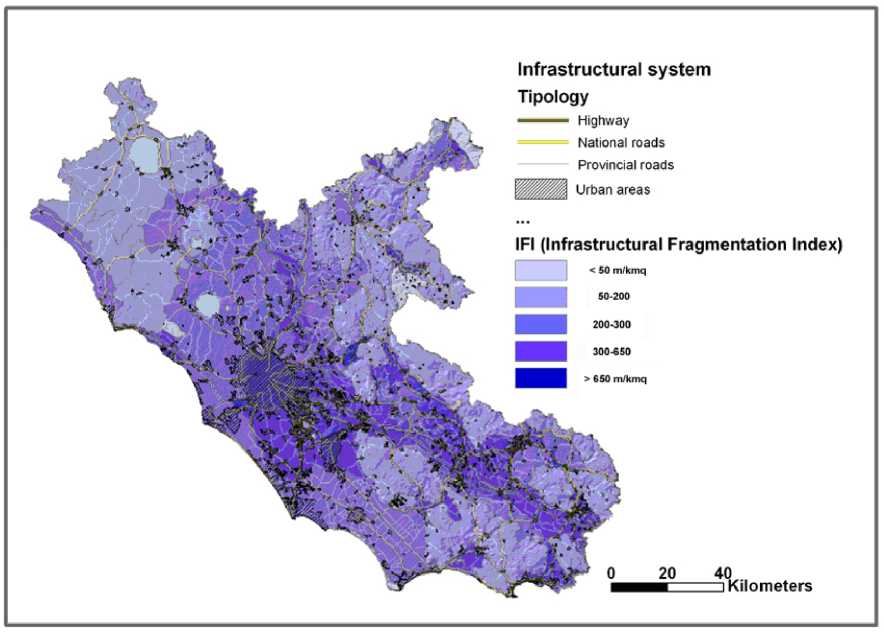∆t = 1/n
(2)
If ∆t are equal, then the probability that wildlife will successfully cross the road
depends mainly on the theoretical speed of movement of the species, the width of the
road and the length and width of transiting vehicles.
These considerations clearly show that it is possible to develop a very detailed
coefficient of biological obstruction caused by roads, at scales where numerous
variables can be used.
If one remains at a territorial level of indicator processing, the latter may be simplified
by attributing an obstruction coefficient equal to the one of side-fenced infrastructure
(100%) when the traffic flow is equal to or greater than 60 vehicles/h. This value tells us
that the section of the road is free from transiting vehicles for one minute on average.
Therefore, the obstruction coefficient may be related to the average daily traffic flow
per hour through the following relation:
oi = n/60
(3)
where n is the traffic flow expressed as the number of transiting vehicles per hour.
In general, the same road sections have very different traffic flows depending on the
season and times of the day and night. In this respect, the fragmentation effect of a road
varies undoubtedly and may be further assessed once relative data are collected.

Infrastructural system
Provincial roads
Urban areas
IFl (Infrastructural Fragmentation Index)
]Kilometers
jl'
Φ.-
Tipology
Highway
National roads
Figure 6 - IFI index calculated for Lazio Region (Central Italy) on the Physiographic Unites (APAT
2004).
More intriguing information
1. On Social and Market Sanctions in Deterring non Compliance in Pollution Standards2. The name is absent
3. The name is absent
4. Keynesian Dynamics and the Wage-Price Spiral:Estimating a Baseline Disequilibrium Approach
5. The name is absent
6. Short report "About a rare cause of primary hyperparathyroidism"
7. Determinants of U.S. Textile and Apparel Import Trade
8. Ein pragmatisierter Kalkul des naturlichen Schlieβens nebst Metatheorie
9. Correlation Analysis of Financial Contagion: What One Should Know Before Running a Test
10. Foreign Direct Investment and the Single Market